Being a private pilot comes with certain privileges and responsibilities.
As a private pilot, you can fly aircraft for personal use and recreation.
However, certain restrictions and regulations govern what you can and cannot do as a private pilot.
Under specific restrictions, a private pilot may permit a passenger to take control of the aircraft.
Private pilots are permitted by the Federal Aviation Administration (FAA) to give passengers control of the aircraft, but significant considerations must be made.
One common question is whether a private pilot can let a passenger fly the aircraft.
What Are The Passenger Restrictions For Private Pilots?
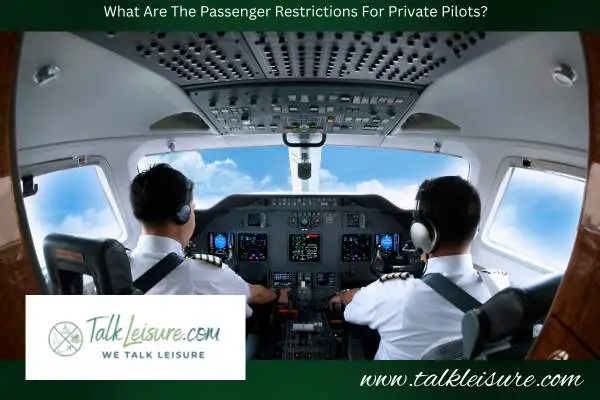
According to the Federal Aviation Administration (FAA), private pilots are prohibited from allowing passengers to exert any control or manipulate the aircraft’s controls during flight unless:
- The passenger is a certified pilot with the qualifications and endorsements to fly the aircraft.
- The passenger is receiving flight instruction from a certified flight instructor (CFI) and is under the instructor’s direct supervision.
As a private pilot, you cannot hand over the controls to a passenger who does not meet the above criteria.
The safety and well-being of everyone on the aircraft are of paramount importance, and allowing an inexperienced individual to take control could compromise the safety of the flight.
It is important to note that the FAA regulations are in place to ensure the safety of all individuals involved in aviation.
Private pilots must comply with these regulations to maintain their privileges and ensure the safety of their passengers.
In conclusion, private pilots cannot let passengers without proper qualifications manipulate the aircraft’s controls during flight.
Safety should always be the top priority, and following the regulations set forth by the FAA is essential.
Can A Passenger Take Control Of The Aircraft?
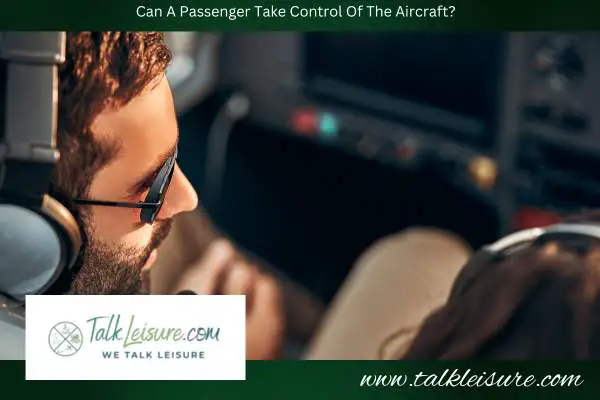
A private pilot can fly passengers with a certified license.
As a private pilot, allowing a passenger to take control of the aircraft comes with certain restrictions and considerations.
The Federal Aviation Administration (FAA) sets passenger limitations and pilot responsibilities guidelines.
Here are a few key points to know:
Pilot In Command (PIC) Responsibility
The pilot in command holds the ultimate responsibility for the safe operation of the aircraft at all times.
This means that the pilot must have full control and be capable of taking over in any situation.
Dual Control Aircraft
In some cases, private pilots may operate aircraft with dual controls, allowing the instructor or another qualified pilot to have control during flight training.
However, this does not mean passengers without pilot qualifications can take control.
Passenger Limitations
Generally, passengers who do not hold pilot licenses are not permitted to take control of the aircraft during flight.
This is to ensure the safety of all individuals on board and to prevent inexperienced individuals from accidentally causing harm.
Can A Private Pilot Let A Passenger Fly?

While there are restrictions on passengers taking control of the aircraft, there are opportunities for private pilots to allow passengers to experience flying from a different perspective.
Some options include:
1. Co-Pilot Experience
Private pilots can allow passengers to sit in the co-pilot seat and observe the flight from a close proximity to the controls.
This allows passengers to understand the pilot’s role better and enjoy the scenic views.
2. Informal Flying Lessons
Private pilots may explain and demonstrate flight controls and procedures to interested passengers.
This can be a fun and educational experience for passengers without them taking control of the aircraft.
3. Flight Simulators
In some cases, private pilots may have access to flight simulators where passengers can experience virtual flight without the risks associated with actual flying.
This allows passengers to “fly” the aircraft in a controlled environment.
Private pilots must adhere to the FAA regulations and maintain the safety of all passengers during flights.
Flight safety should always be the top priority, and passengers should only be allowed to take control if they have the necessary pilot qualifications.
Can A Passenger Be Trained To Fly?
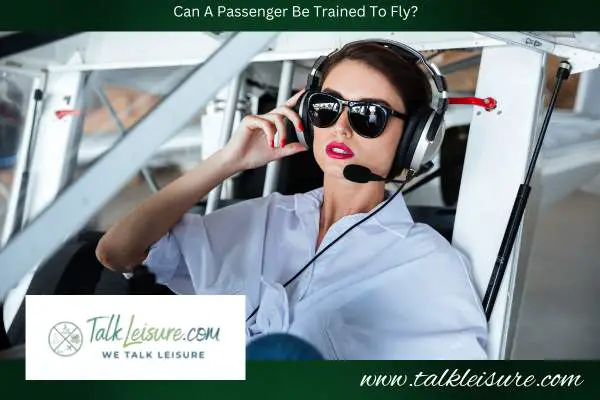
In certain circumstances, a private pilot may be able to train a passenger to fly.
However, it is important to note that the passenger must meet certain criteria and regulations set by aviation authorities.
Some factors that may influence whether a passenger can be trained to fly include:
Flight Training Experience
The passenger must have sufficient flight training experience to ensure safety.
This typically involves completing ground school training and obtaining a student pilot license.
Flight Instructor
The private pilot must be a certified flight instructor (CFI) approved by the aviation authority to train others.
As a CFI, they have the knowledge and skills to teach passengers how to fly safely.
Minimum Age Requirement
The passenger must meet the minimum age requirement set by aviation authorities.
In many countries, the minimum age to obtain a student pilot license is 16 years.
Medical Fitness
The passenger must meet certain medical fitness requirements to ensure they are physically and mentally capable of operating an aircraft safely.
This may involve passing a medical examination provided by an aviation medical examiner.
It is important to note that training a passenger to fly is a serious responsibility and should not be taken lightly.
The safety of both the passenger and the private pilot is paramount, and all necessary precautions and regulations must be followed.
What Are The Implications Of Letting A Passenger Fly?
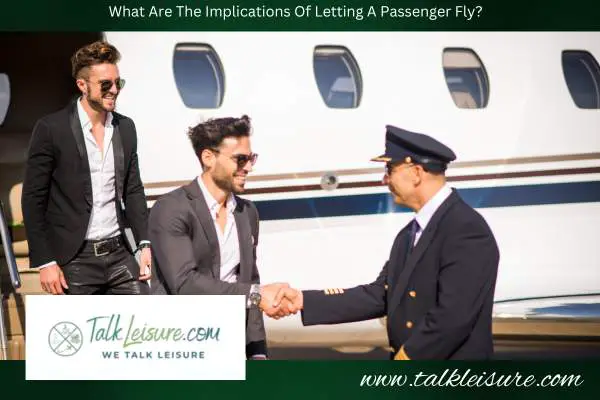
As a private pilot, there are certain legal obligations and responsibilities that you need to be aware of before considering allowing a passenger to fly the aircraft:
1. Licensing Requirements
Pilots are required to hold the appropriate license to fly an aircraft.
Depending on the jurisdiction, there may be specific regulations regarding who is allowed to manipulate the controls of an aircraft.
Allowing a passenger without the necessary license to fly the aircraft could violate these regulations.
2. Insurance Coverage
Aircraft insurance policies often have strict provisions regarding who can operate the aircraft.
Allowing an unlicensed passenger to fly the aircraft could void the insurance coverage, leaving the pilot personally liable for any accidents or damages.
3. Liability And Negligence
Pilots are responsible for their passengers and other individuals on the ground.
Allowing an inexperienced passenger to fly the aircraft increases the risk of accidents and may be considered negligent.
In the event of an accident, the pilot could be held legally responsible for any injuries or damages caused.
What Are The Risks Of Allowing A Passenger To Fly?
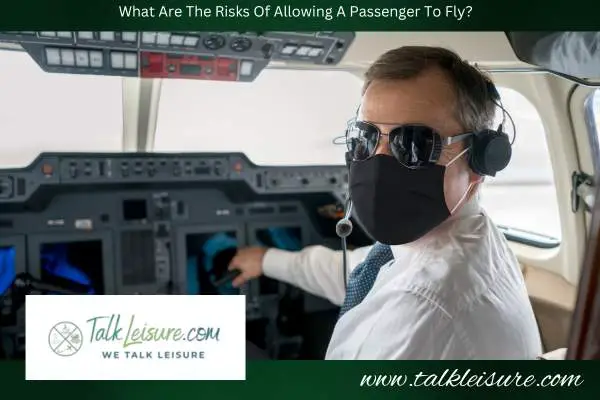
Allowing a passenger to fly the aircraft without the necessary training and experience poses several risks that pilots should carefully consider.
Safety Concerns
Flying an aircraft requires specialized skills and knowledge.
Passengers without training may not be familiar with handling emergencies or understanding the limitations of the aircraft.
This can compromise the safety of the flight for both the passenger and others on board.
Inexperience And Unpredictability
Inexperienced passengers may lack the judgment and decision-making skills for safe flying.
They may make erratic control inputs or fail to follow proper procedures, leading to loss of control or other dangerous situations.
Distraction And Divided Attention
Allowing a passenger to fly the aircraft can be a distracting experience for both the pilot and the passenger.
The pilot’s attention may be divided, leading to a lack of focus on essential tasks such as navigation, communication, and monitoring of critical systems.
Regulatory Compliance
Aviation authorities have clear regulations and standards to ensure the safe operation of aircraft.
Allowing an unqualified passenger to fly the aircraft may violate these regulations and result in legal consequences for the pilot.
Private pilots must prioritize their safety, their passengers, and those on the ground.
While it may be tempting to let a passenger experience the thrill of flying, it is important to adhere to regulations and make responsible decisions to avoid risking lives.
Can A Certified Flight Instructor Allow Passengers To Fly?
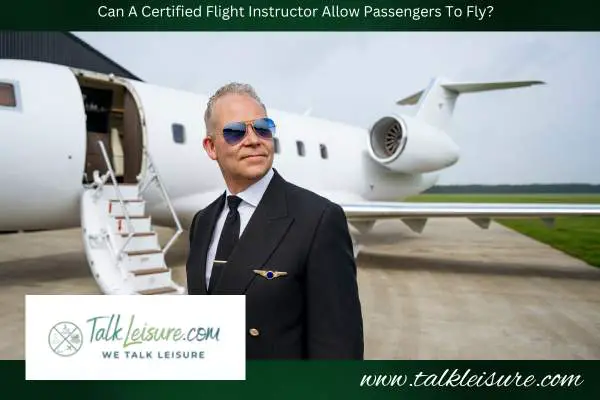
Yes, a certified flight instructor (CFI) has the authority to allow passengers to fly the aircraft under certain conditions.
A CFI is an experienced pilot who has obtained additional training and certification to teach others how to fly.
Here are some important factors to consider when it comes to a CFI allowing passengers to fly:
1. Student Pilots
CFIs often work with student pilots who are learning to fly.
During their training, student pilots are authorized to fly the aircraft under a CFI’s direct supervision and guidance.
This means that the CFI is responsible for the safety and overall control of the flight, even if the student pilot is at the controls.
2. Recreational Pilots
CFIs may also work with recreational pilots who have obtained private pilot licenses (PPL).
A PPL allows the pilot to fly for personal pleasure and transport, but there may be limitations depending on their specific rating and endorsements.
With the CFI’s authorization, a recreational pilot may be able to allow passengers to fly the aircraft under their supervision.
3. Safety Considerations
While a CFI may allow passengers to take control of the aircraft, safety is always the top priority.
CFIs will assess the pilot’s skills, confidence, and ability to handle the aircraft before granting permission.
They will closely monitor the flight and step in if necessary to ensure the safety of everyone on board.
It’s important to note that the rules and regulations regarding passenger flying may vary depending on the country and aviation authority.
Factors such as the aircraft type, the pilot’s license and ratings, and the specific flight conditions will also influence whether a passenger is allowed to fly under the supervision of a CFI.
Conclusion
In conclusion, a private pilot can let a passenger fly the aircraft under certain conditions and limitations.
The Federal Aviation Administration (FAA) allows private pilots to allow passengers to take control of the aircraft, but important factors must be considered.
The pilot in command (PIC) must be the one to initiate and maintain control of the aircraft at all times. They are ultimately responsible for the safety of the flight.
The passenger must be a qualified individual and hold a pilot certificate. This means they must have completed the necessary training and obtained a private pilot license or above.
He/ She must undergo a thorough pre-flight briefing, which includes reviewing emergency procedures, aircraft controls, and the flight plan.
The passenger must be familiar with the specific aircraft they will be flying and be able to demonstrate competency in operating its controls.
The passenger’s flight time can be logged as dual instruction but cannot be counted towards pilot-in-command time.
Pilots must abide by the rules and regulations set forth by the FAA to ensure a safe and enjoyable flight experience for everyone on board.
Flying as a passenger with a private pilot can be an exciting and educational experience, but safety should always be the top priority.
Safe Flight!






